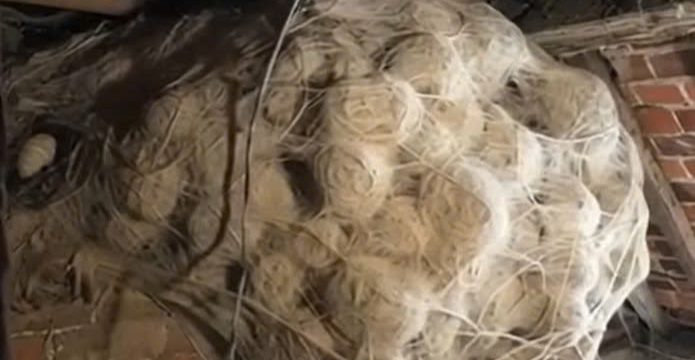M-80s are among the most potent firecrackers to emerge from the United States. Originally created in the mid-20th century for the U.S. military, they were used during training exercises to simulate the loud blasts of artillery fire. The name “M-80” follows the military’s naming convention, where “M” denotes “standard” military equipment, and “80” signifies the 80 grains (5.2 grams) of flash powder inside.

These firecrackers are made with cardboard tubes about 1.5 inches (3.8 cm) long, with a fuse sticking out from the side, often sporting a bright red color. While M-80s have evolved from military use to consumer fireworks, their flash powder content has been reduced to improve safety. The consumer-grade version typically contains around 45 grains (3 grams) of flash powder—roughly half the amount used in military-grade M-80s.
Let’s break down their design, legal status, and the myths that surround these explosive devices.
How M-80s Are Built
M-80s consist of a few critical components that contribute to their power:
- Cardboard Tube: The casing measures about 1.5 inches long and 9/16 inch in internal diameter. It houses the flash powder and enhances the sound of the explosion.
- Flash Powder: This explosive material is a blend of metal powder and an oxidizer. It burns rapidly, creating the distinctive loud “bang” associated with M-80s.
- Fuse: Typically, M-80s use a Visco fuse, which burns slowly and provides a short delay between lighting and detonation, allowing for safer handling.
These components make M-80s one of the strongest consumer-grade firecrackers, but their power also makes them potentially dangerous, which is why they are heavily regulated.
Legal Status of M-80s: Global Restrictions
The legality of M-80s varies by country, as governments strive to ensure public safety and prevent misuse.
M-80s in Canada
In Canada, M-80s are entirely illegal. This ban covers all aspects, including importing, possessing, manufacturing, transporting, or storing these firecrackers. Canadian authorities enforce this law strictly, with severe penalties for violations.
M-80s in the United States
In the U.S., M-80s have faced increased regulation over the years due to incidents of injury and property damage. Key regulations include:
- Federal Hazardous Substances Labeling Act (1966): This act introduced stricter controls on powerful consumer fireworks like M-80s to minimize risks to the public.
- Child Protection Act of 1966: Supported by the Consumer Product Safety Commission (CPSC), this act designated M-80s as regulated ground-level fireworks. The Bureau of Alcohol, Tobacco, Firearms, and Explosives (ATF) is responsible for enforcing these rules.
- Current Regulations (1975): Fireworks for consumer use must contain no more than 50 milligrams of flash powder, significantly lower than the previous 200-milligram limit. M-80s with over 50 milligrams require a federal explosives license for possession.
Despite these restrictions, M-80s are still permitted for use by officials to help farmers deter wildlife from damaging crops.
Real vs. Fake M-80s
Many imitation M-80s on the market are designed to look like the original but differ significantly:
- Less Flash Powder: Legal imitations contain up to 50 milligrams of flash powder—much less than the 5.2 grams found in genuine M-80s.
- Construction Variations: Fake M-80s typically have plaster-filled shells, smaller powder capsules, and plastic end caps, while authentic M-80s use paper end caps and a fuller powder charge.
- Fuse Placement: Real M-80s have a fuse in the center of the tube, whereas imitations often have a fuse extending from the end.
Myths About M-80s: Facts vs. Fiction
M-80s have sparked several myths over the years, some of which have exaggerated their power:
- Myth 1: M-80s Are Like Dynamite
Fact: M-80s are often compared to dynamite, but they are far less powerful. Dynamite contains nitroglycerin, a high-grade explosive, while M-80s use flash powder, which is much weaker. - Myth 2: All M-80s Are Illegal
Fact: Although genuine M-80s exceed consumer limits, they can still be legally possessed by individuals with a federal explosives license. Lower-powder variations are also available for consumer use. - Myth 3: M-80s Are Safe If Handled Carefully
Fact: Even experienced handlers face risks when using M-80s. The powerful blast can cause burns, hearing damage, or even amputations, making them unsuitable for casual use.
Safety Concerns with M-80s
The power of M-80s carries several risks:
- Serious Injuries: M-80s can cause severe injuries, such as burns, loss of fingers, and hearing loss due to their high flash powder content.
- Unpredictable Detonation: Faulty fuses or mishandling can result in premature explosions, increasing the likelihood of injury.
- Legal Consequences: Possessing M-80s without the required license can lead to fines, imprisonment, or both.
Conclusion: The Legacy of M-80s
From military training aids to controversial consumer fireworks, M-80s have had a complex history. While they are powerful and iconic, their potential dangers have prompted global regulations. It’s crucial to prioritize safety and adhere to legal guidelines when dealing with such explosive devices.
For fireworks enthusiasts or anyone curious about pyrotechnics, understanding the risks and rules of M-80s ensures that fun doesn’t turn into disaster. Always handle these powerful firecrackers with caution and respect the laws that aim to protect everyone’s safety





